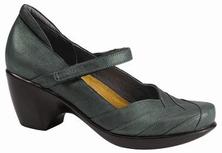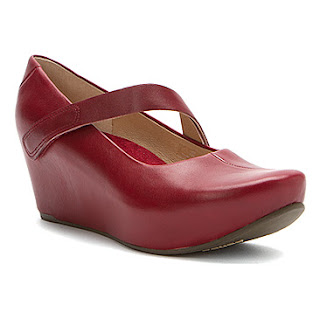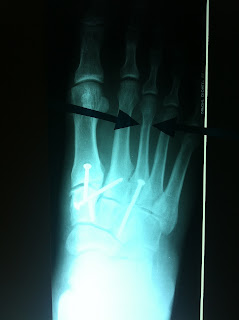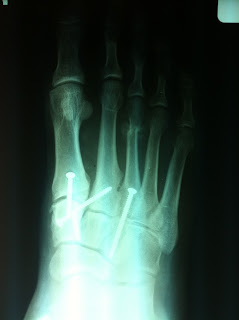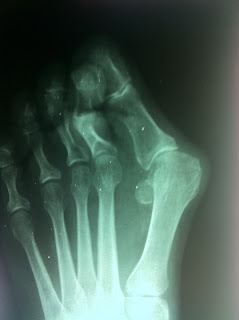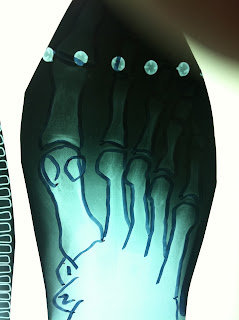Updated List!
Top 20 Comfort Women's Dress Shoes
Any shoes on my list meet three of the four criteria that a shoe must have to be comfortable: a thick rigid and supportive sole, a wide toebox and rearfoot control. The fourth criteria is arch support and although many of these shoes do have decent arch support, I am less stringent on this criteria because you can get custom molded dress orthotics from your Podiatrist that fit into most dress shoes.
My list is not in any order but I would like to reiterate that what shoe feels comfortable on you is very specific to the biomechanical structure of your feet as well as any previous foot injuries that you have experienced. Anyone with forefoot issues (especially Hallux Limitus/Rigidus, which is limited range of motion of the 1st toe joint) should steer away from the heels. I do include a number of higher heels on this list because many women can wear them comfortably and I've tried to choose high heel shoes that are significantly more protective of the feet, which will slow the progression of foot deformities and allow for more comfort - as opposed to wearing a less supportive and poorly constructed high heel.
Enjoy!
NAOT PLEASURE
I love the look of this shoe! Naot shoes tend to be amazingly comfortable as they have padded heel cups and an anatomical cork and latex footbed that conforms to your foot. The Naot Pleasure is a great shoe for anyone who wears a narrow to medium fit. A hidden metal shank in the sole gives the shoe more stability and less motion, which leads to more comfort, less mechanical strain, less chance of injury and 'wear and tear' on joints. This shoe is not recommended for anyone with severe Hallux Limitus/Rigidus, which is limited range of motion of the first toe joint. If you have any severe forefoot issues this may not be the right shoe for you. It is a great shoe for anyone with heel pain and mild Achilles Tendonitis.
NAOT SELECT
This is a similar shoe to the Naot Pleasure (above) and also has a hidden metal shank for more comfort and support as well as the anatomic cork and latex foot bed. This shoe also works well for anyone with a narrow to medium fit.
NAOT DESIGN
For anyone who can't tolerate heels, this is a fabulous flat dress shoe that offers support, comfort and style. It has a removable footbed so that you can replace it with your custom-molded orthotic if needed. For those of you that don't have custom-molded orthotics, the insert is high quality and molds to the foot. This is an excellent shoe for anyone with forefoot issues such as: Hallux Limitus/Rigidus (decreased or no motion of the 1st toe joint), Bunions, Hammertoes, Corns & Calluses, Morton's Neuroma, Osteoarthritis, Heel pain and metatarsalgia.
TSUBO ASMIK
TSUBO ACREA
Several years ago, the Tsubo Acrea was one of my go-to shoes for all-day comfort at work. It has the thick, rigid sole that is crucial to foot comfort as well as midfoot and rearfoot control. Because the rearfoot strap on this shoe moves, I wasn't able to wear my custom-molded dress orthotics in this shoe but I found that I was comfortable with the arch support the shoe provided. Again, this is not a good shoe for anyone who can't tolerate high heels or who has severe forefoot issues such as Hallux Limitus/Rigidus (limited range of motion of the 1st toe joint).
TSUBO BARTO
Because this is a wedge, you get the height for fashion but not the high angle that causes increased pressure on the forefoot structures. The thick, rigid sole is excellent for protecting the foot and the forefoot, midfoot and rearfoot control is wide, soft and supportive.
ALEGRIA PALOMA & ABBI
Assuming that you don't have a severely deformed foot, I'd like to meet the woman who isn't comfortable in these shoes! The Alegria Paloma and Abbi have an amazingly comfortable and protective sole as well as a soft insert with excellent arch support. They come in a wide variety of colors and designs from conservative to quirky.
An extra-wide toebox is perfect for anyone who has painful bunions, hammertoes, corns & calluses, Morton's Neuroma, Metatarsalgia, Hallux Limitus/Rigidus, Osteoarthritis, Degenerative Joint Disease and many other forefoot issues. If you are recovering from a Lisfranc's fracture or sprain, this is a great shoe to ease into after you have healed and are returning to proper shoes. It's also excellent for anyone with heel pain as well as knee, hip and lower back issues.
GENTLE SOULS - UP AT DAWN
Gentle Souls is a brand that recently caught my attention for their high quality shoes that offer women style and comfort. Although this shoe has a 3 inch heel height, the front platform is 3/4 inch resulting in a true heel height of 2-1/4 inches. I particularly like the wide soft toebox. Depending on how high your arch is, this shoe can also accommodate most custom-molded dress inserts.
DONALD PLIMER - IDEAL 5
Expensive but well worth the money! What sets this shoe apart is the stretch elastic upper that is perfect for any painful protuberances such as bunions, hammertoes, corns, bone spurs and tender toes. It has a rigid sole and excellent (but soft) forefoot, midfoot and rearfoot control.
WOLKY CLOGGY
This is a great shoe.
It's almost the perfect shoe.
The only drawback to this shoe is the open back makes it less than ideal for walking outdoors in rainy or snowy climates. It has a thick, rigid sole with excellent arch support for more comfort and protection. The wide toebox is exceptional for anyone with Bunions, Hammertoes, Morton's Neuroma, Metatarsalgia, Hallux Limitus/Rigidus, Degenerative Joint Disease, Osteoarthritis, Capsulitis, and Tailor's Bunions.
This Shoe is Recommended for Patients with:
*Hallux Limitus/Rigidus (limited range of motion of the 1st toe joint)
*Osteoarthritis
* Degenerative Joint Disease
*Bunions
*Tailor's Bunions
*Hammertoes
*Morton's Neuroma
*Capsulitis
*Plantar Fasciits (Heel Pain)
*Metatarsalgia
*Tendonitis
*Achilles Tendonitis
*Mild Over-Pronators
*Knee, Hip and Lower Back Pain
*Sinus Tarsi Syndrome
*Mechanical Strain
WOLKY DAZZLE
WOLKY BLOSSOM
Okay, not the prettiest shoe ever to grace planet earth but, guess what, the Wolky Blossom is ridiculously comfortable! This is the winter version of the Wolky Jewel, which is an excellent sandal that I recommend to many of my patients. Wolky shoes are expensive but I always remind my patients that shoes are an investment. They will pay off (many times over) in less foot, knee, hip and lower back pain.
EARTHIES SYRIANA
I love the look of the Earthies Syriana! They have the thick, rigid and therefore protective sole. The criss-crossing midfoot and rearfoot strapping gives added biomechanical control of the foot and ankle. The forefoot area runs a bit narrower than I would like to see but otherwise, this is a comfortable and stylish shoe for anyone who knows they can wear heels.
EARTHIES SHIPLEY
This adorable vintage looking shoe is perfect for anyone who knows they can comfortably wear a heel. It offers excellent midfoot and rearfoot control and the sole is rigid for more comfort and stability. One of the many reasons I like the Earthies shoes is that they offer good arch support within the shoe but, this shoe in particular, may be able to accommodate a custom-molded dress orthotic from your Podiatrist. If you get molded for dress orthotics, I recommend you take your favorite dress shoes so that your Podiatrist can make the prescription that will perfectly fit that shoe.
EARTHIES BRISTOL
The Earthies Bristol is another dress shoe with exceptional forefoot, midfoot and rearfoot control. The bow is removable and the interior offers good arch support. The wedge in the front offers more protection and comfort for the forefoot.
DANSKO REENY
The Dansko Brand is not for everyone because it offers hard-core biomechanical control that is sometimes 'too much' for some patients. If you have any 'protuberances' or 'bumps' on your feet, you may have trouble finding a comfortable fit because the typical Dansko has very little give.
That being said, Dansko shoes are fabulous! All of them have thick, rigid soles that are super-protective of the foot. If you work on your feet all day, especially on concrete or retail flooring - this may be the perfect shoe for you. When it comes to Dansko, I highly recommend that you go to the store to try them on. You are either going to love them or hate them. If you love them, make sure you only get the ones that have rearfoot strapping.
That being said, Dansko shoes are fabulous! All of them have thick, rigid soles that are super-protective of the foot. If you work on your feet all day, especially on concrete or retail flooring - this may be the perfect shoe for you. When it comes to Dansko, I highly recommend that you go to the store to try them on. You are either going to love them or hate them. If you love them, make sure you only get the ones that have rearfoot strapping.
Dansko shoes are notoriously heavy shoes so I do not recommend these for anyone who has muscular weakness, easily fatigued legs, drop foot, the elderly, or balance issues.
DANSKO NORI
Please see the review above for general information on Dansko shoes. The Dansko Nori is an exceptionally comfortable shoe for most people. This will not be a good choice for anyone with a high arch or an exostosis (i.e. bump or bone spur) on the top of their midfoot because this shoe will cause too much pressure on that area.
DANSKO PROFESSIONAL
This is my current go-to shoe for work. The best Dansko ever and the one that got me through my residency and all those hours on my feet on unforgiving hospital floors! For more information on this shoe, please go to the search box in the upper right hand corner as I did a more in depth review on this shoe several months ago.
DANSKO HARLOW
The Dansko Harlow is an excellent choice for someone who needs a lower heel than the Nori or the Reeny. It also is an excellent choice for someone who can't wear some of the other styles because of excessively high arches or bone spurring on the top of the midfoot area. The design of this shoe doesn't place any pressure on that area unlike some of the other Dansko styles.
This shoe is perfect for anyone who has metatarsalgia and mild Hallux Limitus (limited range of motion of the 1st toe joint).
JOHN FLUEVOG - GRACIAS
I hope this was helpful!
Now the secret is out - this is how a true Podiatry shoe geek spends the Thanksgiving holiday...!
Dr. Cathleen A. McCarthy
:)
******
Check out my first novel which was written under my pen name C. Mack Lewis. It's available on Kindle or you can get a free Kindle app and download it to your iPad.
Thank you for your support!

